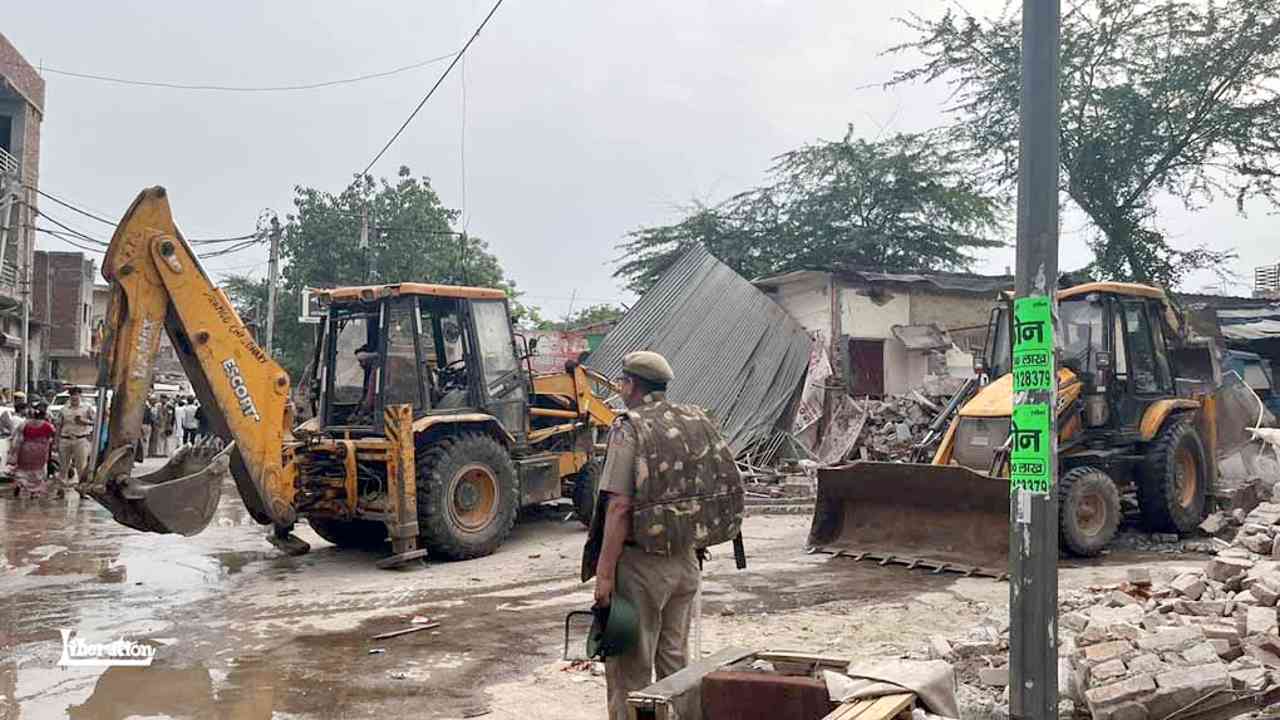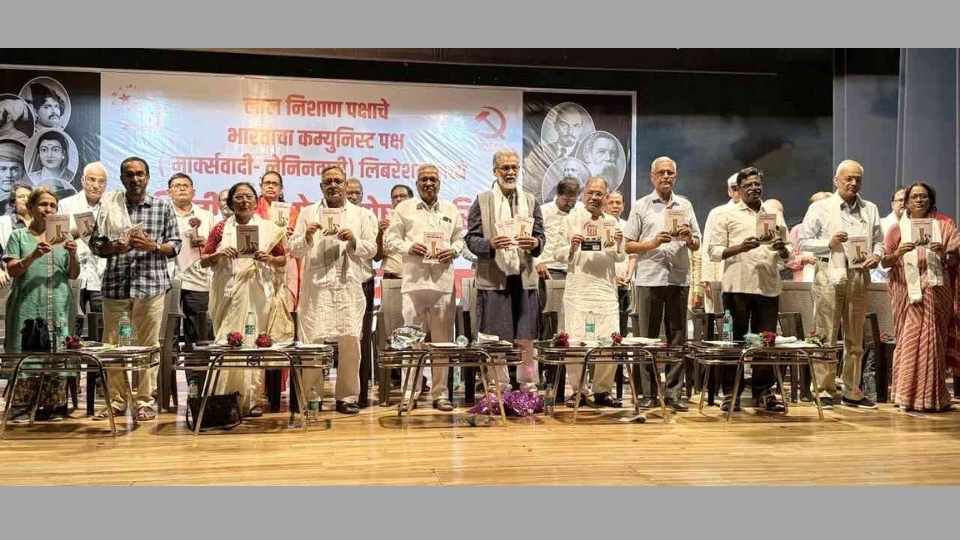The arrival of bulldozers was a difficult sight to behold. People rushed to transport their furniture, water tanks, and all household utensils before the bulldozers hit. They dumped them in a filthy field, in the rain, not knowing what awaited them. By the time the bulldozers finished their work, an extensive area of Tughlakabad, almost twice the size of the Gandhi Maidan of Patna, looked like a devastated war zone.
The demolition happened after several months of back and forth between the Archaeological Survey of India (ASI), the courts, and the residents. On 11 January 2023, the ASI - a Union government agency, had issued eviction notices to all ‘unauthorized’ households within a radius of 100 meters of the historic Tughlakabad Fort. Residents were asked to vacate the premises at their own cost within 15 days or face a demolition drive.
A bit of history is in order here. In 1995, an area of 2661 bighas around the fort was handed over to the ASI by the Delhi Development Authority (DDA), for care and maintenance purposes. In 2003 the SC directed the ASI to ensure that no further construction took place in the area.
Subsequently, in February 2016, the SC further directed the ASI to remove all ‘encroachers’ and to file periodic status reports on the same. There had been small scale demolitions over the last few years in the aftermath of the 2016 order. On 24 November 2022 the SC gave the ASI six weeks to remove all ‘encroachments’ and file another status report on 16 January. The above-mentioned notice came in the context of this order.
The court orders may sound reasonable to outsiders, especially given the fact that the ‘encroachments’ would come in the way of conservation of a historic monument. However there is a catch here. ‘Encroachment’ is actually a misleading term. The residents purchased the land on which they built the houses. Local property dealers, the Delhi Police and the ASI itself allowed this to happen. As for it being an unauthorized colony, such colonies comprise 60%-70% of Delhi’s residential areas. Elite farmhouses, hotels, government schools, dispensaries can all be found in such ‘unauthorized’ areas but bulldozers fall invariably on the houses of the urban poor.
The affected residents in Tughlakabad are mostly workers belonging to Dalit Bahujan and Muslim communities who migrated from Bihar, Bengal, and Nepal over the last three decades and bought pieces of land to satisfy the basic necessity of housing. They are mostly domestic workers, construction workers, daily wagers, who not only earn their living in the city but also keep the urban economy running. If the state refuses to accept its duty to provide housing for all, low-cost private housing is the only way in which workers can find a roof over their heads.
After the demolition notice was served in January, the residents had appealed to the courts asking for rehabilitation before demolition. The High Court had asked DDA, ASI, and the Delhi Urban Shelter Improvement Board (DUSIB) to sit together and find a solution. The DUSIB submitted that their shelter homes were ready to accommodate the displaced people. The shelter homes are at best temporary homes and are not a permanent solution in any sense.
DUSIB’s role even in providing short-term rehabilitation has been poor so far: displaced people have been sent to faraway shelter homes that are at great distance from their places of work and from the schools where their children study. Evidently, no viable long-term solution had been found. Yet the High Court subsequently cleared the path towards demolition through its order on 18 April, 2023.
The ASI did not stop at bulldozing the houses between 30 April and 2 May. On 8 May, the bulldozers arrived again to clear the area of bricks and the debris, i.e. all the household material that had got buried. Most of the people had not been given any time to take out the necessary household equipment such as daily use utensils, home furniture, and children’s school books. The ASI wanted to remove the bricks as well to make sure that the workers were unable to rebuild their houses.
When the women protested, around 20-25 women were thrust into a police bus and taken to the police station. As per video evidence and eyewitness accounts, male policemen used their sticks to push the women into the bus. Many women were beaten brutally in the bus and at the police station before being released after a few hours. Subsequently, the women started a sit-in protest next to the demolition site. They have sat there since 8 May. In their own words, the women protesters are fighting for their fundamental right to a dignified life in a city built with their own hands. They demand ‘jahan jhuggi wahan makaan’ as promised by both Narendra Modi and Arvind Kejriwal, or at least proper rehabilitation. The situation at Tughlakabad is grim to say the least. Since the demolition started, two people are understood to have committed suicide. Their families too seem to have disappeared from the area. The residents want to stage big demonstrations in the city but the police forces are present in large numbers to prevent any mass movement from or into the area.
There are many reasons behind the escalation of demolitions in Delhi. Mehrauli, Gyaspur, Batla House, Shakur Basti and many other areas have witnessed demolitions. The beautification drives due to the upcoming G20 sites, the inadequacies of the Delhi Master Plan 2041, Bharatiya Janata Party’s (BJP) vendetta politics, have all come together to displace large numbers of people.
Each area has its own specificity but the overall theme emerging is an acute lack of workers’ social and political rights to the cities. Either these rights have not been legislated or to the extent that they are, there is a lack of political will in implementing them. Increasing urbanization is making this an urgent political question. The existing fascist regime is undoubtedly converting the question into a humanitarian crisis.
An integrated and comprehensive working class movement is required to generate the necessary momentum to challenge the anti-poor social, political and institutional attitudes of the current government and beyond.
This is a battle for equal citizenship too. The homes addresses on voter ID cards and government documents like Aadhar Card are deemed legitimate for election purposes. The addresses form the basis of voter lists. Yet when the state wishes to take possession of its land by dispossessing citizens, the same documents are considered insufficient guarantors against the bulldozers.
What we are witnessing is nothing but a form of disenfranchisement of India’s precarious and migrant working population. The resistance of the bulldozed citizens against such dispossession is part of the struggle of India’s deprived and exploited communities for equal, substantive citizenship - a quest which animates almost the entirety of India’s constitutional history.





